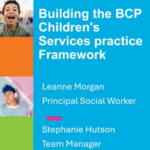THE RESEARCH
Title: The Pursuit of Permanence: a study of the English care system
Authors: Ian Sinclair, Claire Baker, Jenny Lee and Ian Gibbs
Institution: University of York, commissioned by the Department for Children, Schools and Families as part of a research initiative focused on the Quality Protects programme.
ABSTRACT
This study traced the “care careers” of more than 7,000 children looked after by 13 English local authorities. It analysed why children entered and left the care system, the reasons for movement and changes of placement within it, and the outcomes for different groups of children. It concludes with recommendations for how the care system should work and what it should offer.
OBJECTIVES
The last major study of movement of children within the child care system was undertaken by Jane Rowe and her colleagues in the late 1980s. That study, Childcare Now: a survey of placement patterns, was an important landmark in showing how different kinds of placement were used for different kinds of children, and for different purposes.
Nearly 20 years later, this new study by researchers at York University provides a similarly comprehensive picture of how the care system operates and the children within it. It goes beyond the earlier work by looking at the effects on children of social work teams and at differences between local authorities. The study began as an investigation of placement change, prompted by concerns over the number of moves many children experience, but ended up as a broad empirical study of the English care system.
The researchers drew on administrative data from council information systems on all children looked after at any point in an agreed year. Although the 13 councils were not randomly selected, the characteristics of the 7,399 children they looked after over this period closely matched the national picture. Information was collected from social workers on those looked after in the last six months of the year, from team leaders and managers, and from foster carers and residential units. Nearly 100 case studies of individual children provide fascinating insights into what movement within the care system looks like for individual children, and how changes of placement can reflect positive as well as negative experiences.
FINDINGS AND ANALYSIS
A key finding from the study was the great variety of children looked after by local authorities, illustrating the fallacy of treating “children in care” as a homogenous group. The care careers and placements of children varied with their age at entry, reasons for entry, behaviour and family characteristics. The researchers usefully identified several relatively distinct groups, with different types of need as well as different pathways within the care system.
Although this study did not consider the costs of placements, other research illustrates how important a good understanding of the nature of the care population is for planning and costing services. Research at Loughborough University (Ward and Holmes, 2008) has shown that children with different needs follow different cost pathways, and that very troubled young people can cost the local authority seven times as much as those with no additional support needs.
Just under half of those who started to be looked after away from home left the care system within a year of arrival. The researchers found that the majority of placements within the first two years of a child’s care career were intended to be short term. Once a child had been looked after for a year or more, the chance of leaving within the next year was low (about 5% for children aged 11-15).
The main options for children who left were returning home or adoption. Most children who left within a year returned home, although this was not always successful – a majority of those looked after over 11 had experienced at least one failed attempt to return them home. Adoption was almost always used only for those who had entered care under the age of five. The likelihood of return home and adoption varied by council and social work team, and so did the kinds of placements used, without any obvious explanation. Some councils made higher use of kinship care than others, ranging from one in 100 to more than a quarter of all placements. Some councils had far higher reunification rates than others, although they also tended to have higher rates of “failed returns”.
The researchers constructed a measure of how well children were doing, based on social worker ratings, and used this to assess outcomes. They also assessed the quality of placements and of foster carers (again using ratings by social workers and others), and found that both these were strongly related to positive outcomes. The higher the quality, the better the child did – even after taking account of children’s characteristics. Better quality placements (if they were intended to be long term) also lasted longer, although this relationship only held for children over 11. With children under the age of 11, placements that were not high-quality lasted as long as those that were, suggesting that some younger children were staying too long in placements where their needs were not well met.
The study reported mixed results on the usefulness of performance indicators such as the proportion of children experiencing three or more placements in a year. Although these did help to focus professionals’ attention on the need to reduce unnecessary movement, they were less useful when making decisions about what was best for an individual child.
Moreover, “good” performance on the indicators was not strongly related to overall judgements about the quality of departments, and league tables produced by the indicators changed substantially if account was taken of inaccuracies in the data or the different characteristics of the children in different authorities.
The researchers suggest that it might be better for central authorities such as Ofsted to focus on the quality of placements rather than on performance indicators “of dubious accuracy and validity”.
June Statham is professor of education and family support at the Thomas Coram Research Unit, Institute of Education, University of London. E-mail j.statham@ioe.ac.uk
LINKS AND RESOURCES
● Ian Sinclair and colleagues (2007), The Pursuit of Permanence: a study of the English care system, Jessica Kingsley Publishers.
Summary of findings
● Statham J, Candappa M, Simon A and Owen C (2002), Trends in Care: exploring reasons for the increase in children looked after by local authorities, Institute of Education.
● Dickens J, Howell D, Thoburn J and Schofield G (2007), “Children starting to be looked after by local authorities in England: an analysis of inter-authority variation and case-centred decision making”, British Journal of Social Work, 37, 4, 597-618
● Schofield G, Thoburn J, Howell D and Dickens J (2007), “The search for stability and permanence: modelling the pathways of long-stay looked after children”, British Journal of Social Work, 37, 4, 619-642
● Rowe J, Hundleby M and Garnett L (1989), Childcare Now: a survey of placement patterns, Baaf
● Ward H and Sloper L (2008), “Calculating the costs of local authority care for children with contrasting needs”, Child and Family Social Work, 13, 80-90



 Bournemouth, Christchurch and Poole
Bournemouth, Christchurch and Poole  Hampshire County Council
Hampshire County Council  Oxfordshire County Council
Oxfordshire County Council  South Gloucestershire Council
South Gloucestershire Council  Wokingham Borough Council
Wokingham Borough Council  Webinar: building a practice framework with the influence of practitioner voice
Webinar: building a practice framework with the influence of practitioner voice  ‘They don’t have to retell their story’: building long-lasting relationships with children and young people
‘They don’t have to retell their story’: building long-lasting relationships with children and young people  Podcast: returning to social work after becoming a first-time parent
Podcast: returning to social work after becoming a first-time parent  How managers are inspiring social workers to progress in their careers
How managers are inspiring social workers to progress in their careers  Workforce Insights – showcasing a selection of the sector’s top recruiters
Workforce Insights – showcasing a selection of the sector’s top recruiters 

 Facebook
Facebook X
X LinkedIn
LinkedIn Instagram
Instagram
Comments are closed.